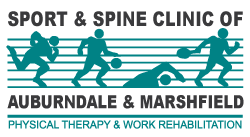
FOOSH Injuries
One of the common injury mechanisms resulting from falls is known as a FOOSH (Fall On an Out Stretched Hand) injury. Despite its funny name, a FOOSH injury can severely impact your upper extremity, leading to significant loss of function. This type of injury occurs when, during a fall, an individual attempts to break the fall with their hands. It’s a natural reflex and challenging to prevent. The impact on the ground can result in a range of injuries, from strains and sprains to fractures affecting the hand, wrist, elbow, or shoulder.
What to look for if you experience a FOOSH injury
- Fractures: Typically, the fractures of the forearm from a FOOSH are the easiest to spot. They become swollen and bruised very rapidly and are associated with a lot of pain. Often, they produce a visible bulging of the skin of the forearm which can even protrude outside of the body. Fractures of the wrist and forearm will need to be evaluated and often re-set and cast. Following casting, the person must regain strength and range of motion through a guided exercise program before normal function can return. These injuries may take as long as 12 weeks to heal, but as many as 20 weeks to return to normalcy. This process can be expedited significantly by a referral to a well-trained physical therapist.
- Sprains: Sprains from a FOOSH are much more difficult to spot. A sprain is a common injury to a ligament that normally holds one bone to another as a part of a joint. It most likely causes moderate to severe swelling, bruising, and pain. The pain may occur both by moving the joint yourself or having someone else move the joint while you are relaxed. During a sprain, a non-contractile piece of tissue becomes torn partially or completely. The result is a joint that is too lax to allow proper joint stability. This can cause problems for years following the initial injury. Think of the brake system on your bicycle. If the brake cable becomes elongated the brake does not function correctly until it is repaired. An evaluation by a physical therapist is necessary to diagnose and treat a sprain correctly and to prevent further injury to the injury site as well as allow for speedy recovery.
- Strains: Strains are also difficult to spot following a FOOSH. A strain differs from a sprain in that it occurs as a tearing of the tendon instead of a ligament. This can present like a sprain with swelling and bruising but will have a few different characteristics. Tendons attach to bone on one side and muscle on the other. Tendons therefore hurt with both passive motions, but also active motions. Strains of the wrist and hand can cause a significant loss in function with things like writing, typing, or even just holding an object in your hand. Without intervention, this can lead to progressively worsening problems like tendonitis and carpal tunnel syndrome, which may need surgical intervention if not attended to quickly.
 How to avoid a FOOSH injury
How to avoid a FOOSH injury
- Exercise Balance and Strength: Strengthening the muscles that support your upper body, particularly the arms, shoulders, and core, can significantly reduce the risk of FOOSH injuries. Incorporate exercises that enhance stability, such as yoga, Pilates, or specific weight-training routines. Additionally, agility drills and balance exercises can improve your body’s reflexes and ability to recover from unexpected falls. By maintaining good overall strength and balance, you’ll be better equipped to prevent injuries resulting from sudden impacts.
- Mindful Techniques during Activities: Pay attention to your body’s signals during physical activities, especially those involving higher risks of falls or impacts. When engaging in sports or activities with potential fall hazards, remain mindful of your surroundings. Use proper equipment, such as wrist guards or protective gear when appropriate, to minimize the impact of a fall. Additionally, learn how to fall safely by practicing techniques like tucking and rolling to distribute impact and reduce the strain on your hands and wrists. Being alert and adopting precautionary measures can go a long way in averting potential FOOSH injuries.
- Environment Awareness: Be aware of your surroundings, especially in unfamiliar or potentially hazardous environments. Scan for obstacles or uneven surfaces that might lead to a fall. Take caution on slippery or wet surfaces and to use handrails whenever available.
- Proper Falling Techniques: If you do fall, it’s important that you try to stay relaxed, bending your knees and elbows. Try to roll with the impact to dissipate the force across a larger area of your body rather than absorbing it all through your hands and wrists.
- Regular Check-ups and Conditioning: It’s important to go to your regular check-ups with a healthcare professional to evaluate bone health and joint stability. We also suggest conditioning exercises focused on improving flexibility and range of motion in the wrists and hands, reducing the likelihood of severe injuries in case of a fall.
Don’t wait to treat a FOOSH injury
Remember, a FOOSH can happen to anyone at any age, and recovery from a FOOSH injury often requires specialized care and rehabilitation. At Sport & Spine, our team of experienced professionals understands the complexity of these injuries and can tailor a treatment plan to address your individual needs. From targeted exercises to regain strength and mobility to therapies aimed at minimizing pain and restoring function, Sport & Spine is dedicated to supporting your recovery journey.
Early intervention after a FOOSH injury is crucial for optimal healing. If you’ve experienced a fall resulting in upper extremity pain, don’t delay seeking evaluation and treatment. Sport & Spine is here to provide expert guidance and care, helping you regain confidence in your physical abilities and return to your active lifestyle. Click here to schedule your appointment.
